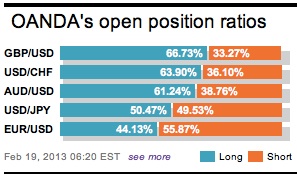IMF’s Lagarde admitted last week that foreign exchange rates are not far from “fair value.” Is this market trying to take her thoughts to task and trade them literally? Most of the recent market movements have been confined to relatively tight spaces. This is certainly not the ideal scenario when promoting the largest and deepest of asset classes. But, what does “fair” value mean?
To many non-major countries they have an issue. The current market perception is that many of the major’s are at the moment mostly “undervalued.” Prior to the credit crisis, a weaker major pairing like the EUR or JPY would have offset a stronger dollar. However, the current trade weighted index (TWI) has the majors undervalued by -8% when compared to the mean of the last three-decades. The minors or tier II reserves on the other hand are overvalued by +11% (AUD, CAD, SEK). Analysts note that the spread between the major and minor is the widest it has been for the same time period (19). So, relying on fair value as a market argument would seem to be a costly exercise.

The only spreads that this FX market seems comfortable in touting are the periphery bond spreads. This morning, both Spanish and Italian spreads are again widening to bunds, as political uncertainty begins to heighten ahead of this weekend’s Italian election. There are rumors that Berlusconi, like the phoenix of old, is rising from the ashes, and closing the gap, perhaps forcing the necessity of an alliance with his rivals and Monti.
Italy is only one of a handful of general elections called for this year in Europe. Both political and economic uncertainty will be capable of dictating the core EUR positions taken. Over the past five sessions, this market has felt more comfortable in paring back some of these core-EUR longs because of political uncertainty.
Outlier releases continue to occur, like this mornings German ZEW investor confidence survey. The surprise to the upside with the headline figure (48.2 vs. 35) seem to be providing an excuse to offload some more of these long EUR’s. The gains of the past two months support the view that Euro Q1 growth will come in positive. More importantly, the trend towards a stronger economy has not been broken thus far. This market should have expected a more positive EUR reaction, however, the lack of it points towards a long EUR position concern. It seems that the dip in current conditions, 5.2 from 7.1, may be a closer indication to reality and enough reason to pare some of these EUR longs.
Even the Spanish debt issues this morning should have provided the single currency more support. If any, it was brief as investors eye an equity market chugging along with no lack of initiative. The Spanish Treasury sold -EUR4b of 3- and 9-month paper (top end of its targeted amount) and at yields slightly lower than a month earlier on the shorter-term issues. Treasury concentrated most of the sale on the 9-month paper (+1.144%, BTC of 2.3), a new maturity that replaces the 18-month T-bill at the monthly auctions. Spain also sold -EUR0.8m of 3-month bills at an average yield of +0.42%. With short-term product having few concerns with liquidity, the issue was 5.8-times subscribed.

The mighty dollar has lost ground to yen this morning. It seems that the market is comfortable taking profit after the Japanese Finance Minister Aso played down suggestions that foreign bond purchases were part and parcel of Japan’s economic plan. This is the one area that the G7 members were adamant and against, Japans selling of its own currency to fund purchasing of foreign bonds. However, with little proof that Abenomics is to be watered down coupled with a somewhat passive G20 stance towards the yen’s value over the past weekend will only further support the weakening yen trend. The market does not see the yen reversing its depreciating trend to the dollar any time soon.

The single currency market remains soft on the back of Middle East selling of EUR/JPY. It seems that speculators are once again committed to playing a tight 50-point range (1.3330-80). The previous ‘big’ figure range is perhaps too wide for the current market’s risk appetite. Market rumors of vanilla options at 1.33 and 1.3350 are perhaps a market direction indicator? Any focus on expiries will again have this market rooted to the spot.

Other Links:
Weak GDPs Weigh on Euro
This article is for general information purposes only. It is not investment advice or a solution to buy or sell securities. Opinions are the authors; not necessarily that of OANDA Corporation or any of its affiliates, subsidiaries, officers or directors. Leveraged trading is high risk and not suitable for all. You could lose all of your deposited funds.



